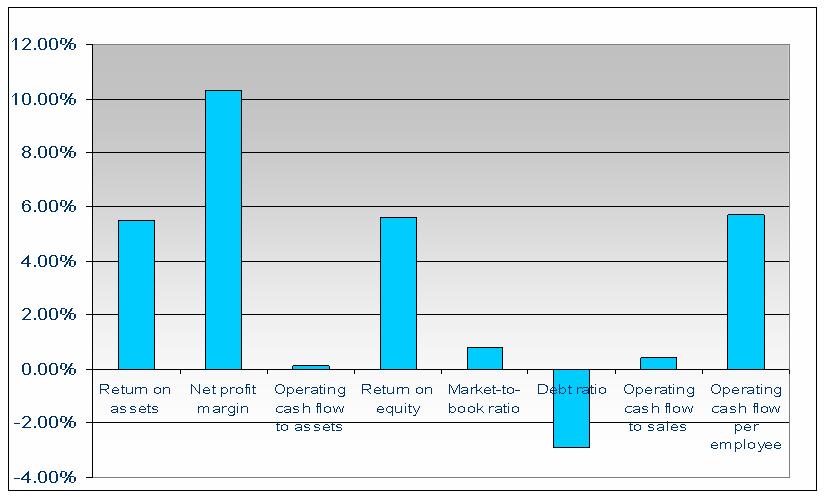 There has been significant research in this area predominantly from the UK and US but is there a case for the link between productivity and innovation in employee owned companies?
There has been significant research in this area predominantly from the UK and US but is there a case for the link between productivity and innovation in employee owned companies?
Many critics have argued that this is a tenuous link but the information and success stories are pretty compelling:
David Erdal, recently spoke in South Africa about his personal experiences of converting his business to an employee owned company. He speaks about this more eloquently than I in his TED video. He went on to become the Managing Director of, Baxi Partnership which offers a unique range of support for organisations that are or want to become employee owned.
Mondragon is currently it is the seventh largest Spanish company in terms of asset turnover and the leading business group in the Basque Country. At the end of 2011 it was providing employment for 83,869 people working in 256 companies in four areas of activity: Finance, Industry, Retail and Knowledge. The Co-operatives are owned by their worker-members and power is based on the principle of one person, one vote. The decision to use of a portion of each member enterprise’s net revenue as a fund for research and development has funded impressive new product development. R&D within MC now employs 800 people with a budget over $75m. In 2010, 21.4% of sales of MC industries were new products and services that did not exist five years earlier.
John Lewis has been hailed in the UK as one of the best models of employee owned businesses. We had Sir Stuart Hampson and Peter Cox visit Australia last year and below are some of the statistics of its success. It has been employee owned since 1929, it has sales of £8.7bn, it has 81,000 employees (Partners), it has Profits of £354m, over the last fifty years the average bonus has been 16% (in industries in general in the UK in the last 3 years bonuses have averaged 0-3%).
Likewise, Arup has had consistent organic growth over several decades, strong financial independence, innovation pursuit, creativity, technical excellence. In the latest staff survey 89% of Arup personnel around the world “feel proud to work for Arup”, 87% “would recommend Arup as a place to work”.
Publix is Fortune 100 top best companies to work for 2012, for the 15th consecutive year. It is the largest employee-owned supermarket chain in the United States, had retail sales of $27.0 billion in 2011, has a current employee count of more than 152,500. It is also the fastest-growing employee-owned supermarket chain in the United States and excels in community involvement and volunteering.
What about the smaller companies?
In Australia a really good example of how employee ownership can save jobs is C-Mac Industries, a small manufacturing company that converted to employee ownership. C-Mac Industries had not made a profit in three years, and the owner’s children were not interested in inheriting a business with such tight profit margins. Despite the fact that it is a viable business, employing 40 people, with $3 million worth of machinery, it was effectively valued for sale at $0. The owner, 57, was not prepared to close the company and put all the employees out of work. The solution was an employee buy out. The owner of the business says “There is a change in behaviour and they are taking more interest in the finances and objectives and the strategies of the company. Staff are a lot more keen to find work … They realise they can’t leave it all to the boss.” At C-Mac two employees have been elected to the board and information about the trading and financial performance of the company is now posted up on the lunch room wall so that employees are fully aware of how things are going.
In the US the very recent example of Spinnaker Coating, is a good case study. The owner recently completed an ESOP transaction that resulted in the sale of 100 percent of our business to a trust created for the benefit of all current and future employees. Spinnaker, a $100 million pressure-sensitive labelstock manufacturer based in Troy,Ohio, gave the entire work force (currently 250) an ownership stake. Creation of an ESOP assured continuation of the outstanding customer-service model created at Spinnaker, and avoided the risks to employees associated with a sale of the entity to a third party. The CEO commented “it is one alternative that can be used to keep manufacturing jobs from disappearing. Just as importantly, it can eliminate the tension between management and front-line workers and unite them in the pursuit of productivity — and an equitable sharing of enhanced profits”.
Ok, so they are compelling examples but is this the common outcome of employee ownership?
Research backs up the ESOP stories…..
The UK Employee Ownership Index, published by law firm Field Fisher Waterhouse, says companies owned more than 10 per cent by their employees outperform FTSE All-Share companies.
Joseph Blasi’s research through Rutgers University and presented to the Melbourne University in 2010 supports the productivity growth, where it is coupled with high participation/high performance policies (information sharing, team work etc) and low supervision:
Alex Brill in 2012 found that members of Employee-Owned S Corporations of America increased employment by 60% over the past decade, versus flat employment in the economy as a whole. The surveyed ESCA members also regained momentum more quickly after the recession than private firms. Active participation is also up. In particular, in 2007, when the recession hit, private U.S. employment took a dramatic downward turn, active participants among this subset of S ESOPs actually increased. Many S ESOPs are in the manufacturing industry, where employment has been trending downward in the United States for the last decade. The ESOP structure has buffered S ESOP manufacturing firms.
In “The ESOP Performance Puzzle in Public Companies,” published in 2006 issue of the Journal of Employee Ownership Law and Finance, Robert Stretcher, Steve Henry, and Joseph Kavanaugh research was based on 196 publicly traded U.S. ESOP companies. Each ESOP company was matched to a comparable non-ESOP company. The companies were studied during the years 1998 through 2004. The results were returns on assets that were higher than the matched non-ESOP companies in all seven years, net profit margins that were higher in all of the five years and operating cash flows in three of the five years:
In the UK a research report by Jonathan Michie, Christine Oughton and Yvonne Bennion in 2002 examined over 100 companies, 78% of which were individually owned. Where company information was shared with employees e.g. new initiatives, company performance, and performance targets and where the employee were involved in day to day decision making, design of new initiatives, long term strategic goals and the formulation of performance targets, the results were significant:
So whilst there is no research in Australia the multitude of evidence is clear that employee ownership when aligned with participation, information sharing and low supervision does have a significant impact on productivity. Are you convinced yet?



